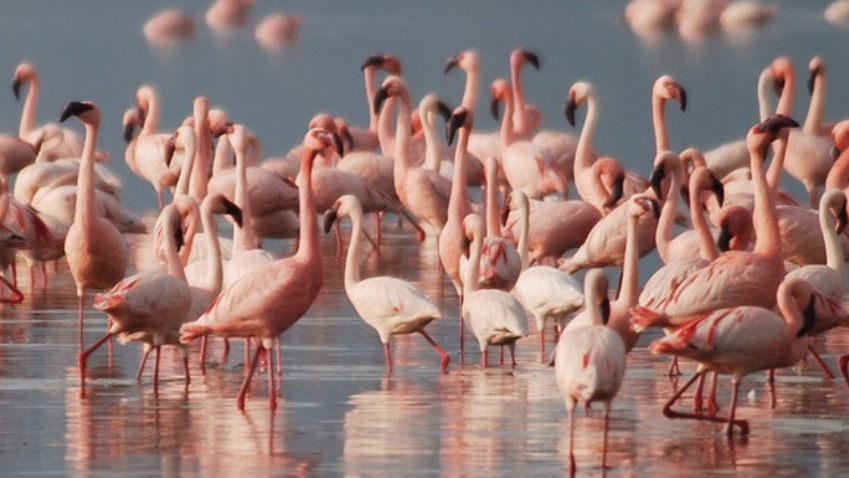The Fascinating Life of Anegada Flamingos
Anegada, an island in the British Virgin Islands, is home to one of nature’s most captivating creatures—the Anegada flamingo. Known for their vibrant pink feathers and graceful demeanor, these birds have long fascinated both locals and visitors alike. Their presence in the Caribbean adds a touch of splendor to the already picturesque landscapes.
The Unique Habitat of Anegada Flamingos
Anegada flamingos thrive in the unique environment of Anegada, which is vastly different from the other islands in the Caribbean. This flat coral island, unlike its volcanic neighbors, is characterized by its salt ponds and mudflats, which are ideal for flamingos. These shallow waters provide the perfect breeding ground for the birds, and the abundance of algae and crustaceans contribute to their distinct pink coloration.
Flamingo Habitat
Flamingos are typically found in large flocks, known as colonies, which can number in the thousands. The birds prefer environments that provide both safety and food. In Anegada, the vast stretches of shallow water and the isolated nature of the island offer a safe haven for these magnificent creatures. The salt ponds, which are rich in brine shrimp and algae, offer an abundant food supply, crucial for their survival and reproduction.
The Lifecycle of Anegada Flamingos
Understanding the lifecycle of the Anegada flamingos provides insight into their behavior and the challenges they face. Like other flamingos, they follow a distinct pattern from birth to adulthood.
Breeding and Nesting
Breeding season is a significant time for flamingos. During this period, males engage in intricate courtship displays to attract females. These displays often involve synchronized movements, head-flagging, and wing salutes. Once a pair forms, they build a nest out of mud, which serves as a protective mound for their eggs. Flamingos typically lay a single egg, which both parents incubate. The incubation period lasts about 28 to 30 days. After hatching, the chick is fed a special “crop milk,” a nutrient-rich secretion from the parents’ upper digestive tract. This diet is crucial for the chick’s rapid growth and development.
Growth and Development
As the chicks grow, they gradually lose their gray down feathers and develop the iconic pink plumage. This transformation is largely due to the carotenoid pigments found in their diet. Young flamingos remain with the colony, learning essential survival skills from the adults.
Unique Behaviors of Anegada Flamingos
Flamingos are known for their unique behaviors, many of which are crucial for their survival in the wild.
Feeding Habits
Flamingos feed by filter-feeding, a process where they use their specially adapted beaks to separate mud and silt from the food they consume. They often feed with their heads upside down in the water, using their tongue to pump water in and out of their beak. This feeding technique allows them to capture small organisms like brine shrimp and algae, which are abundant in the salt ponds of Anegada.
Social Structure
Anegada flamingos are highly social birds, living in large colonies that provide protection against predators. This social structure also plays a role in their breeding success, as synchronized nesting helps to ensure that chicks are born around the same time, reducing the chances of predation. Conservation Efforts and Challenges While the Anegada flamingos are a treasured part of the island’s biodiversity, they face several challenges that threaten their survival.
Conservation Initiatives
Efforts to protect the Anegada flamingos have been in place for several years. Conservationists and local authorities have worked together to monitor the flamingo populations and preserve their habitat. Initiatives include protecting nesting sites and controlling human activities that could disrupt their environment.
Threats to Survival
Despite these efforts, flamingos still face threats from habitat destruction, climate change, and human disturbance. Rising sea levels and increased storm activity pose significant risks to their nesting grounds. Additionally, human activities such as tourism and development can lead to habitat loss and increased pollution, further endangering the flamingo population.
The Cultural Significance of Anegada Flamingos
Beyond their ecological importance, Anegada flamingos hold cultural significance for the local community. They are a symbol of natural beauty and resilience, drawing tourists to the island and contributing to the local economy. The presence of these flamingos also serves as a reminder of the importance of preserving the natural world for future generations.
In Conclusion
The Anegada flamingos are a breathtaking testament to the beauty and diversity of life in the Caribbean. Their vibrant presence enriches the island’s natural landscape and serves as a reminder of the delicate balance that must be maintained to ensure their survival. Through continued conservation efforts and community engagement, we can help protect these magnificent creatures for generations to come.



